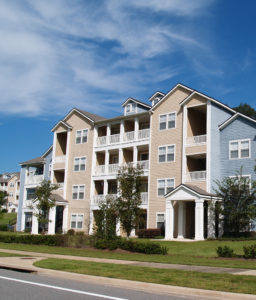Property and casualty rates are going up. It’s news no real estate owner wants to hear but is the unfortunate reality of the current marketplace for real estate portfolio insurance. Unlike past years, the rate increase will not be dictated by an individual’s loss history or premium size; instead it is dictated by capacity and whether a carrier is even willing to entertain a real estate portfolio.

Most people do not realize that the insurance market is a global marketplace. Much like securities or real estate, the insurance market is cyclical and dictated by external and internal factors that play heavily into rates and coverages offered by carriers. When we see years of huge losses due to catastrophic storms, fires, and floods, the market “hardens.”
A hard market means that rates and coverages become constricted as capacity with both reinsurers and standard carriers dries up.
Reinsurers, simply put, are the insurance companies for insurance companies. When an insurance carrier is established, they buy reinsurance to back up the policies they write. The reinsurer works with the carrier to set parameters of what they can and cannot write, and what types of rates they are looking for. Reinsurers re-negotiate their contracts from time to time and this trickles down to the end-insured in the form of rate increases or coverage changes.
This year, a historic number of reinsurers left the real estate marketplace, more specifically in the habitational arena. According to national brokerage firm Willis Towers Watson, market capacity for multifamily accounts may have declined by as much as 50%, largely in part because these types of properties can be problematic for insurers due to their 24-hour exposure. After taking hundreds of billions in losses, they no longer are willing to write this type of business. What this means is that there is less competition and the carriers who are left writing this business can pick and choose what accounts they want to write and at what rates.
As the reinsurers constrict capacity and raise rates, some carriers will look to offset large increases by raising deductibles and restricting coverage. This allows carriers to minimize their risk on certain types of coverage like earthquake and flood, and forces those insured to have more skin in the game. As a result, the insurers are more insulated from the smaller claims and reserved for larger claims, lowering their resource output and frequency of claims. This will translate to more premium for less coverage and will continue to trend this way until the market levels out. A prime example of this is in California where some homeowner’s carriers have started to exclude wildfire claims. This coverage can be bought back, but the price is high to offset the risk.
The hardest hit sub-section of the real estate market will be the older, frame buildings that do not have fire protection and coastal properties. In the northeast, we have mostly older buildings and many insurance carriers will not write any building constructed before 1980/1990. Many have left the market completely for coastal properties, especially on the eastern seaboard. Those that haven’t are assigning very large deductibles to losses related to wind or hurricanes.
The market outlook for the end of 2019 and into 2020 is going to be rough for most property owners as they see these changes materialize. However, the market is cyclical and as the rates reach a more sustainable level, we will see more carriers come back into the space and competition increase. Weathering the storm before that time will be difficult, and most real estate owners should budget for increases for 2020.
At RogersGray we have access to an exclusive program that has proved to be a beneficial alternative for many of our clients. To learn more about how we can help your business during the hardening market, please reach out at MCarnuccio@RogersGray.com, on LinkedIn or via phone 978-722-0208.
Matt Carnuccio
Consultant | Business Insurance
 Matt is a Business Insurance Consultant at RogersGray Insurance. He works as an adviser to his clients, helping them design a risk management strategy that aligns with their own unique situation. He has 8 years experience working with emerging and middle-market companies that have sophisticated liability insurance needs. Matt also enjoys spending time with his wife and two children, and is passionate about saltwater fishing! You can connect with him on LinkedIn or by email
Matt is a Business Insurance Consultant at RogersGray Insurance. He works as an adviser to his clients, helping them design a risk management strategy that aligns with their own unique situation. He has 8 years experience working with emerging and middle-market companies that have sophisticated liability insurance needs. Matt also enjoys spending time with his wife and two children, and is passionate about saltwater fishing! You can connect with him on LinkedIn or by email
